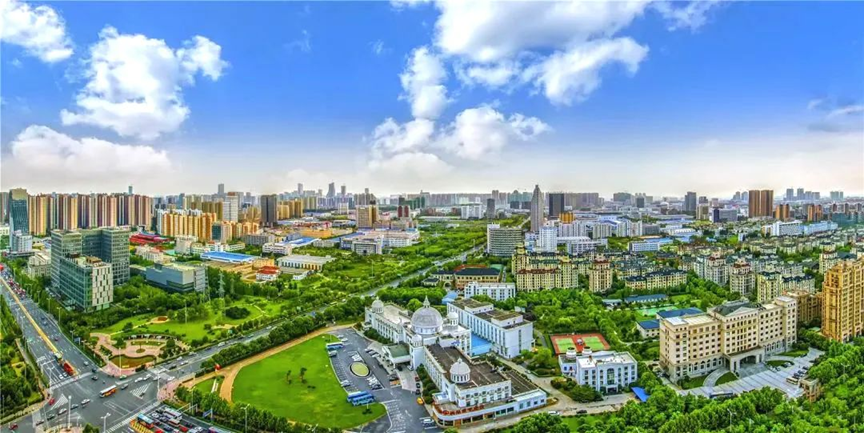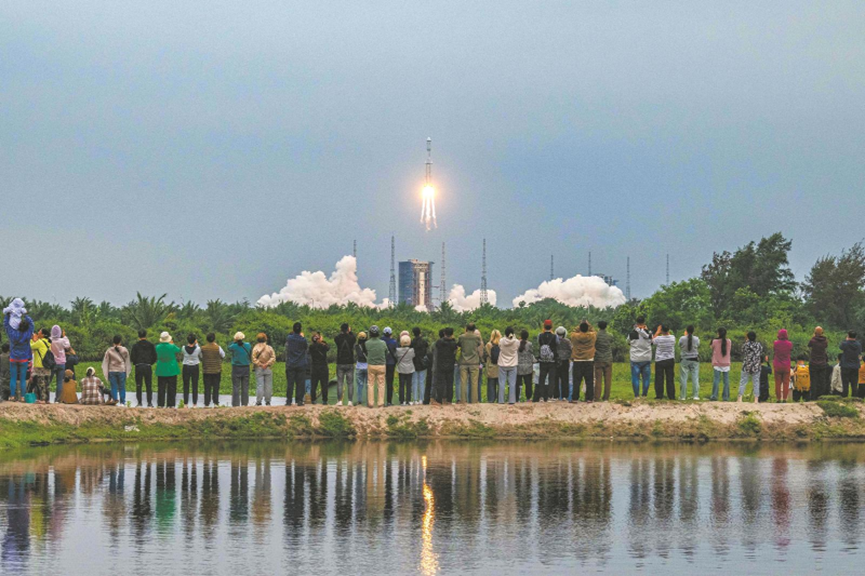Hefei high-tech zone fuels growth in future-oriented industries
Updated: 2024-10-10
|China.org.cn
In recent years, the Hefei National High-tech Industry Development Zone has proactively developed future-oriented industries by establishing a "2+3+X" system focused on quantum technology, aerospace, artificial intelligence, new energy, and synthetic biology.

The Hefei National High-tech Industry Development Zone. [Photo/WeChat account: hefeigaoxinfabu]
In March, two communications and navigation technology test satellites, Tiandu-1 and Tiandu-2, were sent into space by the Long March-8 carrier rocket. These satellites, developed by the zone's the Deep Space Exploration Laboratory, were China's first lunar satellites to fly in formation in a highly elliptical orbit around the moon.

Satellite launch site. [Photo/WeChat account: hefeigaoxinfabu]
The low-altitude economy serves as a significant growth driver. As part of its aerospace industry development blueprint, the zone has achieved notable advancements, including the successful launches of Hefei High-tech No. 1 and Tiandu Satellites. Industry leaders such as Haitian Silk Road, Zhongke Satellite, and Guodian Gaoke have also established operations in the zone.
Currently, the zone is home to approximately 120 aerospace enterprises and 12 research institutes and innovation platforms. These entities focus on areas such as remote sensing payload development, satellite data processing, communication protocol design, and unmanned aerial vehicles.
Driven by cutting-edge technologies, future-oriented industries have become a strategic area for advancing scientific progress and driving industrial upgrades. As a core area of the Hefei Comprehensive National Science Center, the zone is advancing into future-oriented sectors such as the metaverse, next-generation artificial intelligence, and controlled nuclear fusion.
The Hefei National High-tech Industry Development Zone now boasts over 400 provincial-level and above research and development platforms, ranking second among China's high-tech zones, behind Zhongguancun in Beijing.
The establishment of innovation platforms has accelerated the commercialization of sci-tech achievements. The zone emphasizes the deep integration of scientific innovation and industrial application, facilitating the realization of core technological achievements.
As of July, the zone had accumulated 20,830 valid invention patents, with 299 high-value patents per 10,000 people, ranking among the top in the nation.
Source innovation activates new growth drivers and breaks new ground. A large number of cutting-edge technologies will transition from research to application within the zone, generating more new quality productive forces.
